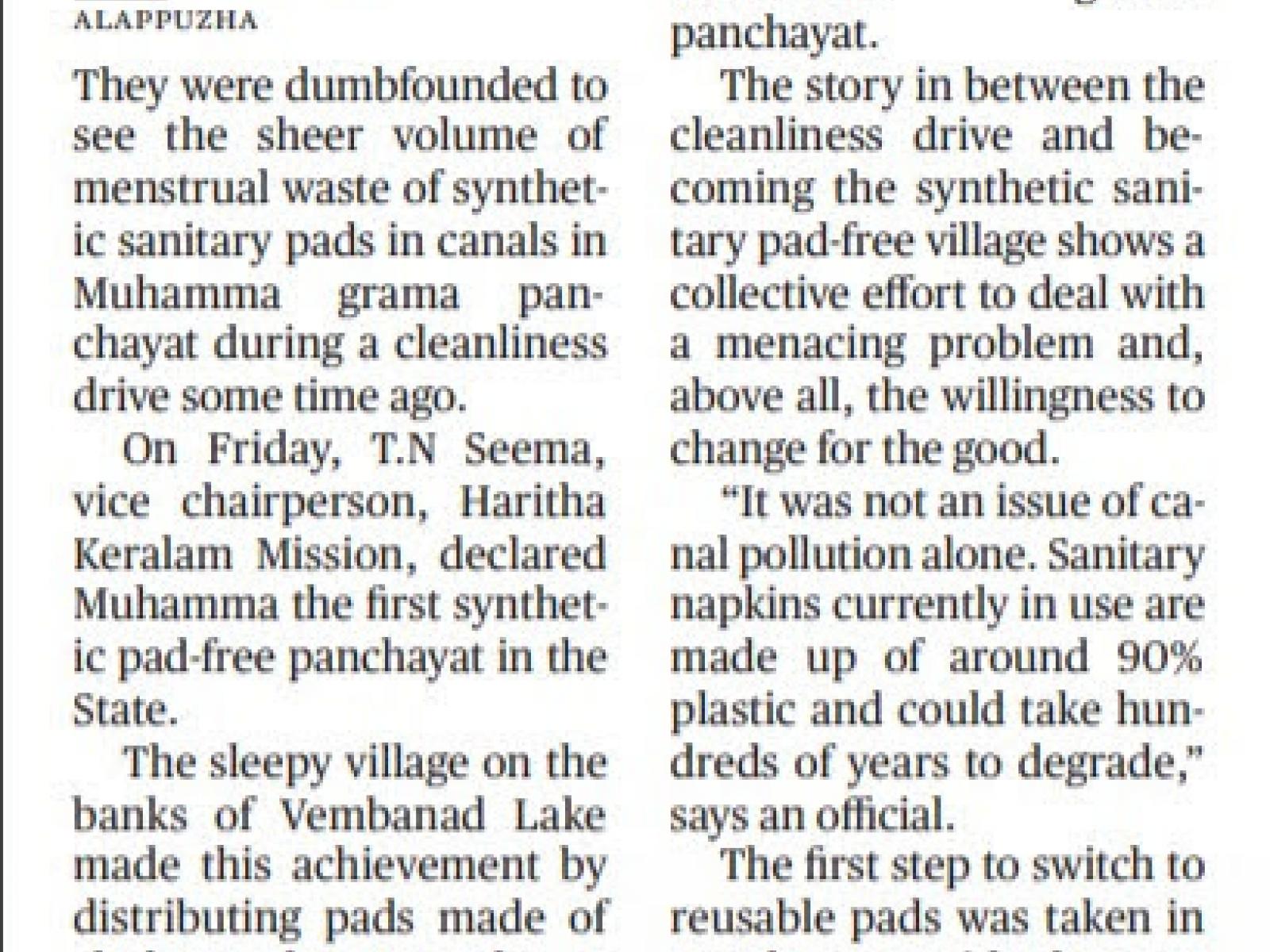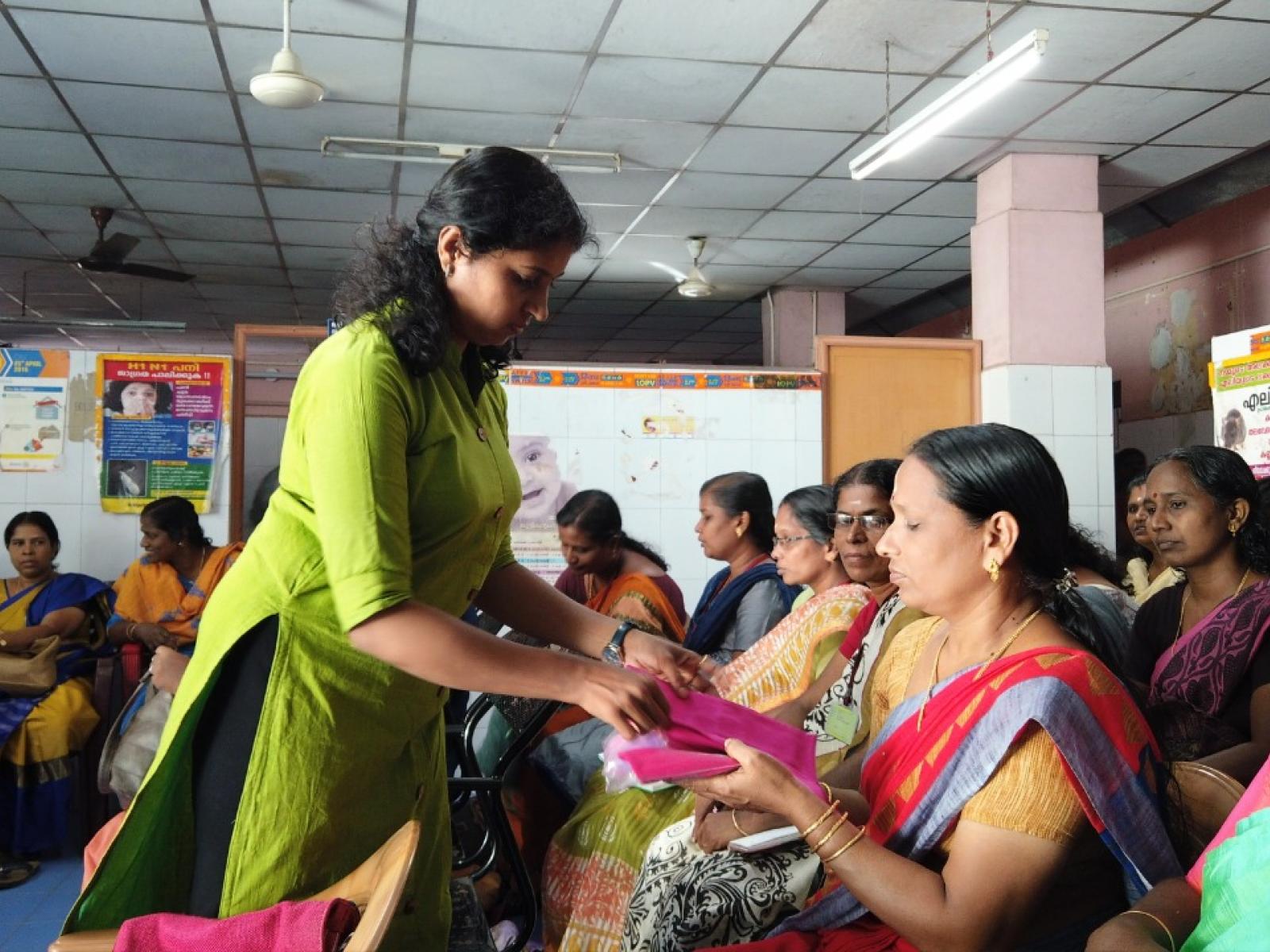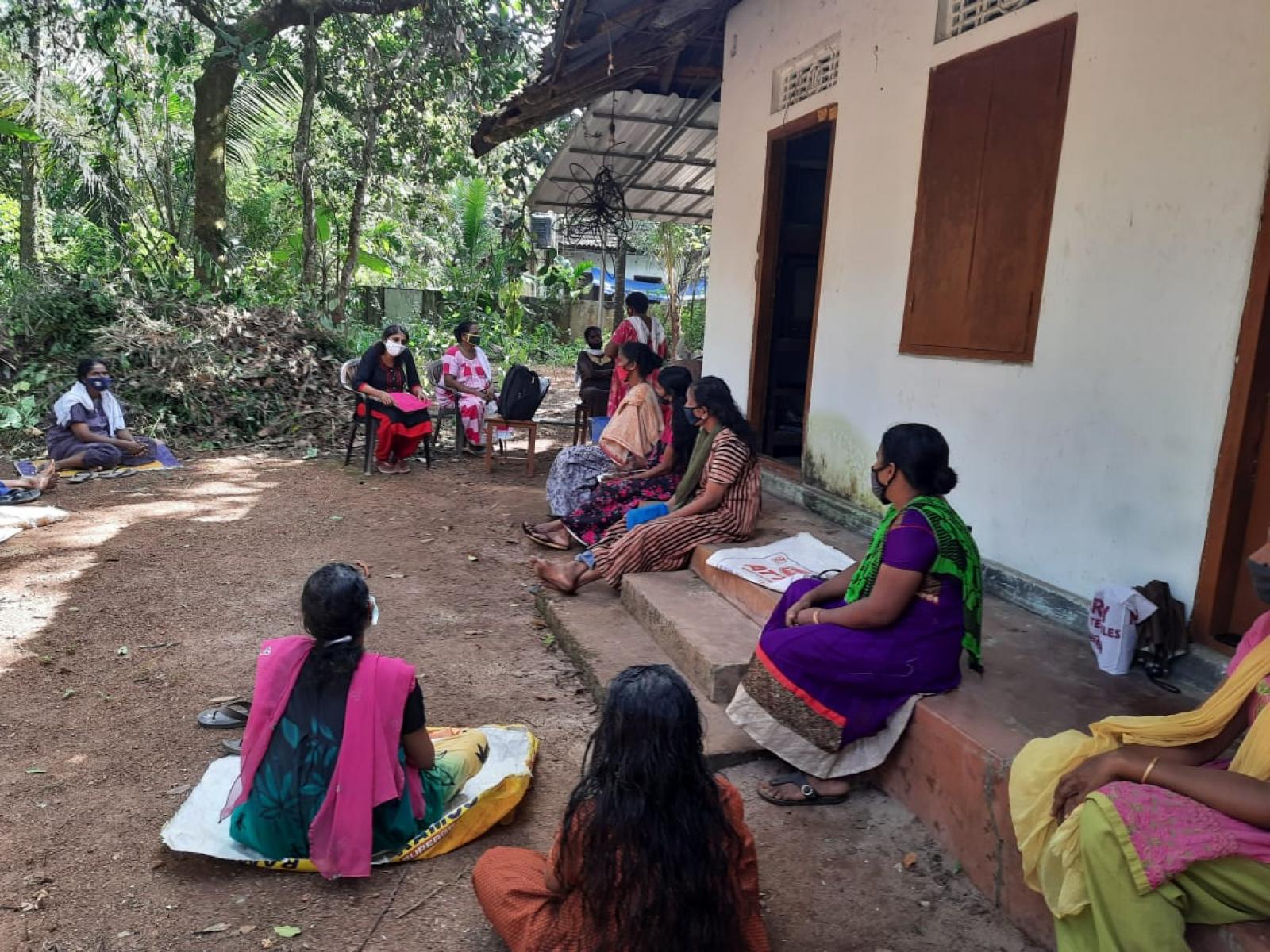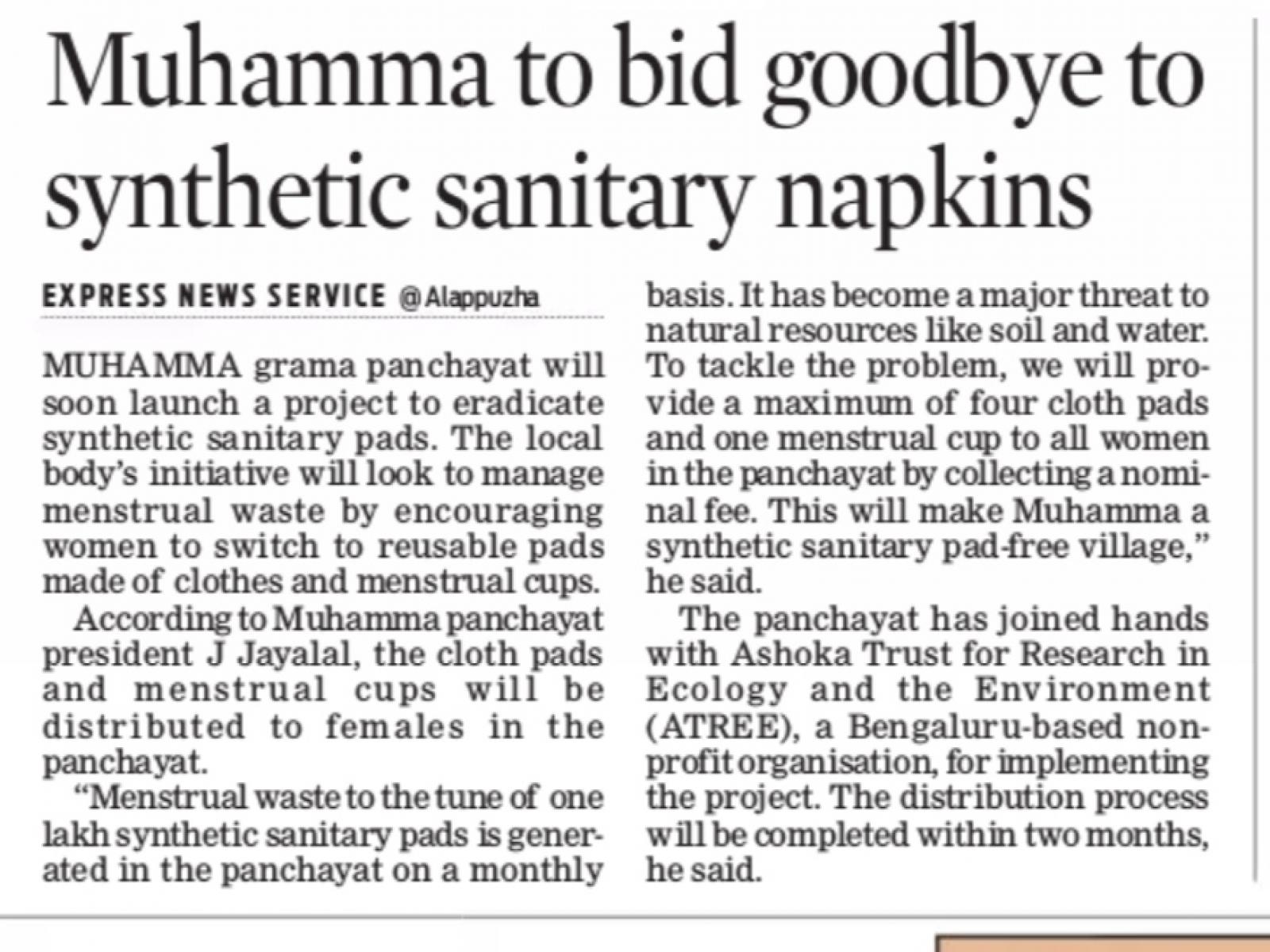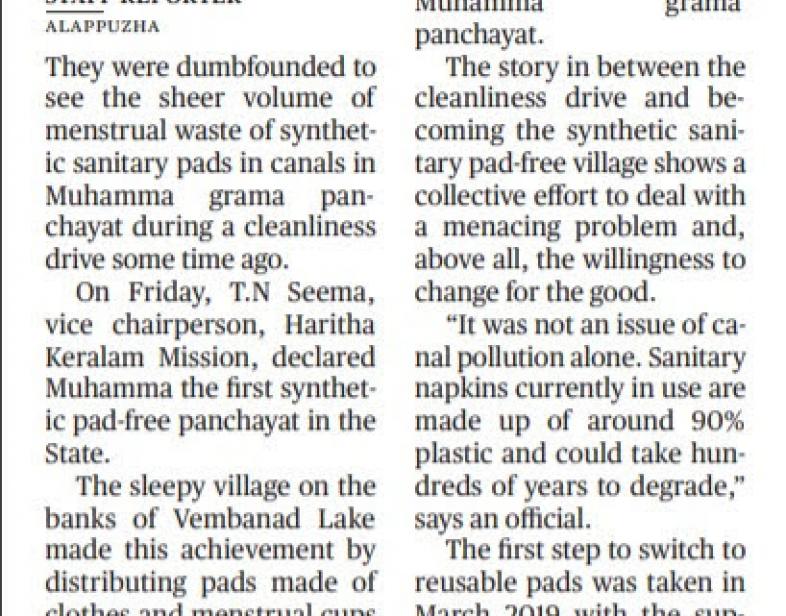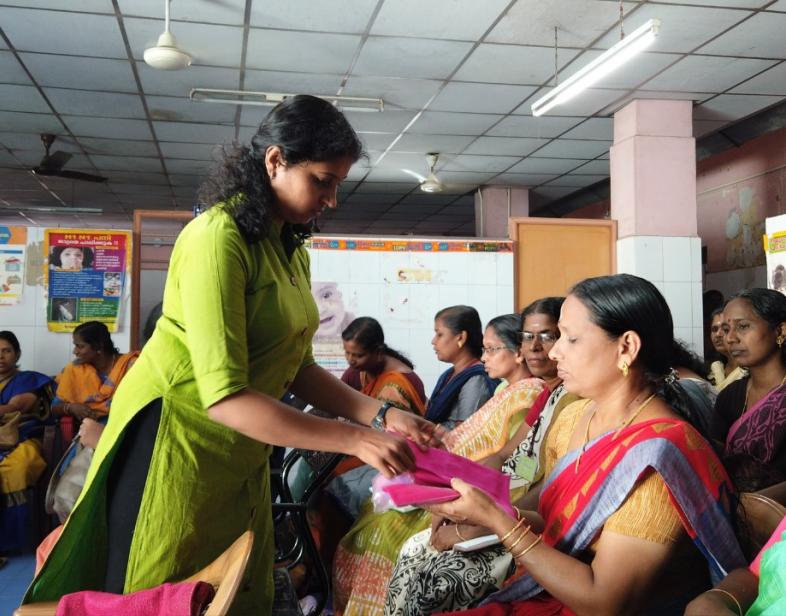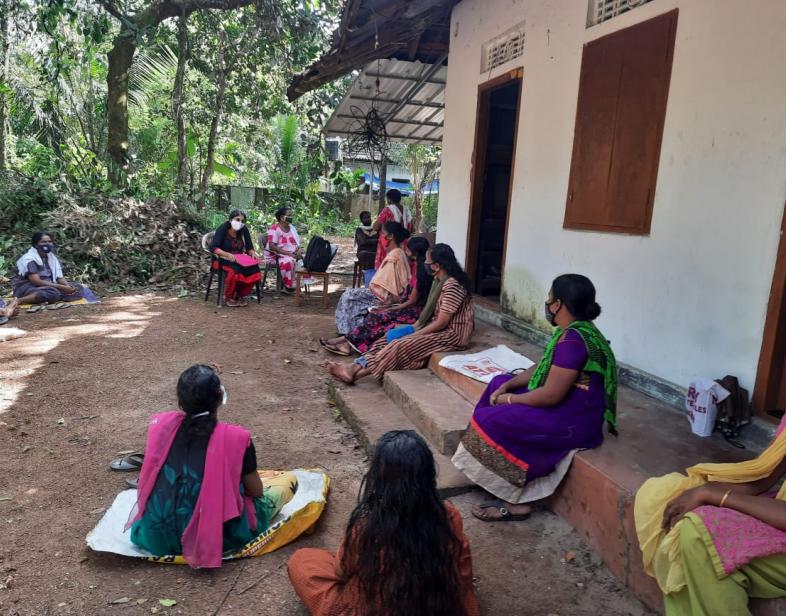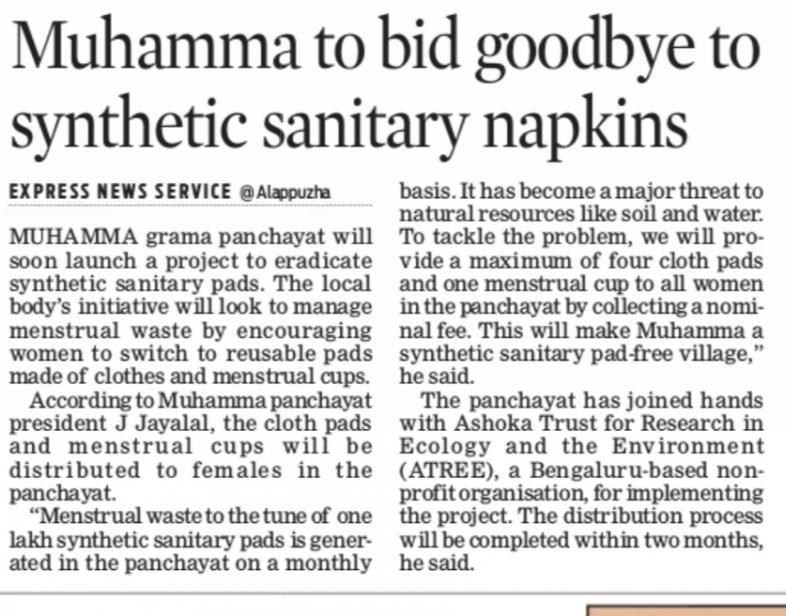An Overview Of Our Solution
The major objective of this program was to address the ground and lake water pollution and women’s health issues caused by single-use synthetic sanitary napkins. To achieve this, sustainable alternatives like reusable cloth pads and menstrual cups were promoted through conscientization and sensitization campaigns among the community. The program was implemented in a local self-government unit, Muhamma village Panchayath (Kerala, India), collaborating with its governing bodies, departments, and women self-help groups. This intervention entailed a shift in women's conventional perceptions, that over two years of ensuing many offshoots to the idea of sustainable menstruation. The program transcended Muhamma to the first-ever synthetic sanitary napkin free Panchayat in India. In the long-run, it envisages clean wetland with cleaner water bodies.
- Population Impacted: 10000+
- Continent: Asia
Nombre
Apellidos
Tipo de Organización
Correo electrónico
Análisis de Contexto
Geographically low lying (-0.5-1M MSL), Muhamma Panchayath in Alappuzha (Kerala, India) is a part of the Vembanad estuarine system and is a labyrinth of canals, ponds, and lake. Though surrounded by freshwater, Muhamma faces absolute scarcity for drinking water, since ground and lake water is polluted. Single-use synthetic sanitary pads form one of the major pollutants to the water sources. About 100,000 sanitary pads are disposed of in the ecosystem every month. The common practices of disposal are flushing, throwing out, burying, or burning. The issue is socially challenging as it is sensitive, mixed up with the stigmas and taboos associated with menstrual hygiene. Data from the Primary Health Centre shows that women here are affected by repeated episodes of skin diseases, vaginal infections, and allergies due to the use of synthetic pads and poor water quality. However, the gravity of the situation is not adequately identified and manifested among the general public and authorities.
Describa la solución técnica que usted esperaba ser adoptada por su audiencia meta.
The single-use synthetic sanitary pads currently available in the market contain more than 90% plastic, super-absorbent gels, and plasticizers and are not biodegradable. Widespread use of these disposable items comes with environmental and human health costs. We devised a solution to promote reusable and biodegradable alternatives like cloth pads and menstrual cups. Cloth pads made from cotton and menstrual cups made from medical-grade silicone are healthy alternatives to synthetic pads as they can be washed and reused for many years. Compared to synthetic napkins, these sustainable alternatives are economically viable and have negligible health and environmental adversities.The major challenge was to create awareness among women about these products, breaking their inhibitions and eliminating fears, and inculcating and promoting the usage as a part of the behavioral change. Thus we aim to reduce tons of waste that would have ended up in the landfills and water bodies in the are.
Describa su intervención para cambiar el comportamiento de su audiencia meta relevante a su solución.
A detailed analysis of the project area was carried out to understand the ground realities better and identify constraints, challenges, and existing gaps. Once the focus areas were identified, efforts were met to induce behavioral change, starting from providing relevant information about menstruation and menstrual hygiene products. Thus the central strategy was to create open forums for deliberations on the topic that served as platforms for information exchange. Focusing on health, environmental, social, and economic aspects of the issue, thereby building awareness among women by disclosing false perceptions, myths, stigmas, and taboos associated with menstruation. It was found that roughly around 20% of the rural women followed the traditional practice of using old cotton cloth to manage menstruation, making it easier to switch to modern cloth pads. Further, the involvement of health professionals, local self-government, and other supportive systems helped to construct reliability and have established the stakeholders' confidence level. While ensuring the availability of these alternatives, the government's financial aid in the form of subsidies to cover the higher initial cost also helped the cause. Through special women assemblies and media usage, the awareness programs helped to propagate the message more effectively among the masses. A follow-up was also done to collect feedback and to resolve doubts regarding the usage of these products.
Palancas de cambio de comportamiento utilizadas
Si es necesario, por favor explique el tipo de intervención en mayor detalle
Society was influenced by information exchange. A series of local awareness campaigns, open discussions, workshops, door-to-door campaigns, printed media, videos, online media, and local channels were utilized to create awareness about the issues and solutions. All these programs organized with extensive community participation regardless of gender paved the way for social and behavioral change. At a more popular level, the social and environmental impact of this initiative has been highlighted both in the print, audio and visual media helped to influence the society with its rippled effect along the district and states. The benefits of the technology were presented in such a way emphasizing the health and environmental hazards that it poses to the present and future generations to evoke fear and emotions in the target population. Since the women are of low-income status, in addition to subsidies, a small incentive was also offered to encourage them to adopt the alternatives.
Describa la implementación de su estrategia y solución.
A comprehensive plan was developed for better outreach, partnership, and collaboration with grassroots organizations in the locale and various arms of the local self-government. The target population was categorized for better outreach and adoption of the technical solution. The right product was selected based on the need, fetched them partnering with the producers and distributors, and delivered to the community after a trial run. The whole program caught the eyes of the local governing body and state planning board which reflected in their support in terms of plan funds, logistics, and manpower. Apart from the health workers, the program was supported by the field extension institutions such as the Integrated Child Development Scheme(ICDS), Kudumbashree (a community organization with a three-tier structure for its community network for the empowerment of women), and Harithakarmasena (GreenArmy). Linking the education department and awareness in their institutions helped in inculcating a conservation approach among future generations.
The ASHA workers, being regular in the fieldwork ensured follow-up and source of authentic information about the visible changes in the behavior of the women. They monitored houses that were assigned to them and provided information. Thus, we collected authentic information from the community about affirming alternative products making it a critical factor in the implementation process. The movement of the single-use products was being monitored and as it found decreasing the sustainable alternatives were made available in the shops which helped in stabilizing the behavioral change. This institutional approach is represented in the diagram below.
The major challenges like social stigmas and taboos in society were addressed through continuous brainstorming and open platform discussions about menstruation and related health issues and the adoption of alternatives to solve them.
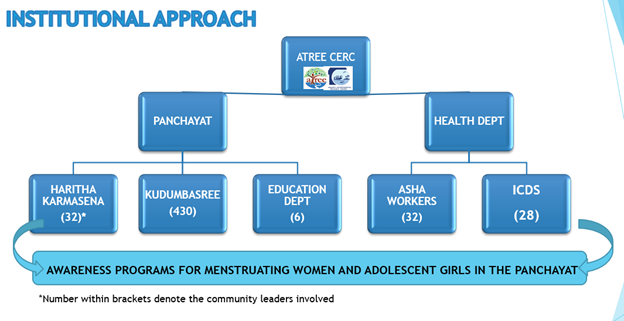
Describa quién lidera la implementación de su solución.
The program's implementation was done by ATREEs field academy, Community Environmental Resource Center (CERC). ATREE has solely directed the planning and execution of the project, arranged awareness campaigns, and alternatives at subsidized rates. During the process, ATREE collaborated with the panchayat and health department and worked with a team of leaders from the community which constituted ASHA workers, ICDS, Kudumbasree, and the young adolescent girls from the schools in the locale. These leaders helped to coordinate the outreach activities through various Local Self Governments units and the decision making process during the campaigns. Decentralizing the leadership roles during the execution of the project to the different arms of government and leaders from the community has helped in developing a sense of responsibility and protection for nature.
Incluya algunos de los actores clave con los que colaboró durante el desarrollo e implementación de su proyecto.
The whole program was carried out with ANTRIX corporation’s support and their Corporate Social Responsibility (CSR) initiative. While devising and developing the solution, and in its implementation, we partnered with several agencies. The partnership with companies like Eco femme (www.ecofemme.org), Auroville (Pondicherry), and Crescenzia tech Private limited (Bengaluru) helped to procure cloth pads and menstrual cups at a reasonable price. Besides, Eco femme extended the support under their “Pad for Sisters” program for rural women considering the underlying novel cause and social commitment. During implementation, at the community level, partnership with LSG was ensured by convincing them of the positive impacts of this intervention on the health, environment, society, and economy of the area.
¿Quién adopto los comportamientos deseados y en qué grado? Por favor incluya evidencia recolectada demostrando el cambio
According to our pre and post-intervention surveys around 7000 women in the community have shifted to sustainable alternatives from single-use synthetic sanitary napkins. Our evaluation and analysis suggest that this shift was attainable through perpetual awareness and follow-up sessions. The number of women using clothes to endure their menstruation raised from 20 to 45% after the campaigns, which shows progress towards availing sustainable and eco-friendly options. Further, 45% of women started using cloth pads, and the remaining 10% had substituted menstrual cups showing a total shift in the behavioral patterns in discarding synthetic sanitary napkins. Additionally, the declining demand and sale of synthetic sanitary pads have forced them to procure and sell sustainable alternatives in the local shops. A post-intervention survey conducted by the state's health department unveils that the initiative has improved health and hygiene among women received a wide audience through media.
¿Qué impacto tuvo sobre los niveles de contaminación del agua? Por favor sea específico e incluya las metodologías usadas
The interventions carried out through the project prompted the women in Muhamma to make the green shift by getting rid of the synthetic single-use sanitary pads, which otherwise would have ended up in the water bodies. Thus an estimated 1lakh used sanitary pads were prevented per month from causing pollution through this intervention. Each synthetic sanitary pad is equivalent to 4 plastic bags and it takes 800 years to degrade which may lead to microplastic pollution. The continuous canal rejuvenation method and monitoring activities evidenced the absence of menstrual waste dumped into the water bodies. This program’s success has sent an evident message across the state on sustainable menstrual management alternatives to reduce water pollution.
¿Cuál ha sido el impacto de su solución en los desafíos de equidad?
The intervention helped in demolishing the many equity challenges that ruled society. Traditionally the community has been under the influence of many such challenges, especially gender and related social taboos associated with menstruation. The open discussions on menstruation and health educated the population and helped in overcoming such disparities in society. The women's behavioral changes to adopt alternatives like menstrual cups determine how the project has influenced these equity challenges. Subsidizing the alternatives regardless of income and social class has been the strategy. It also helped the women plan their budget more economically with additional savings they get out of it. This becomes more relevant when most women in the area fall into a low-income group who depend on the fish clam and coir industry for their livelihood.
¿Cuáles fueron algunos de los beneficios comunitarios y sociales adicionales?
A diverse group of stakeholders was involved to address the challenges related to health, environmental, and social issues created by menstrual wastes. The continuous awareness programs over a span of two years have brought many associations together on a common platform, creating social unity to fight against a common cause. Foreseeing the demand for alternatives, training has been imparted to the women groups in stitching cloth pads which envisages new livelihood for the women.
¿Cuáles fueron algunos de los beneficios ambientales adicionales?
The intervention reduced water pollution from irresponsible disposal of menstrual wastes which was impacting the water bodies and public health. The awareness programs built in a sense of responsibility towards the conservation of the environment and natural resources in the area. Reduction in menstrual waste is expected to improve the ecosystem health of the Vembanad Ramsar site which would help to improve the livelihood conditions of the lake dependant people.
¿Cuáles fueron algunos de los beneficios de desarrollo sostenible?
The solution aids to resolve women’s health concerns, which will improve the family's health and well-being. Promises health and environmental benefits by keeping water and soil clean, reducing water-borne diseases, conserving aquatic & soil biodiversity, and fishery. Reduced spending on sanitary pads provides economic benefits. Awareness campaigns empowered rural women to overcome taboos to discuss and find solutions to menstrual issues. Thus the project helps in realizing SDGs 3, 6,14,15
Sostenibilidad: Describa la sostenibilidad económica de su solución.
Though the initial investment for the alternatives was high, economic sustainability is ensured as the products are reusable for several years. Since Muhamma is a rural village where most women fall into the low-income group, they were financially supported by providing the alternatives at subsidized rates. In the long run, the benefits will out-weigh the synthetic sanitary pads, and subsequently, people will buy them without subsidies. A women’s self-help group was formed, trained, and facilitated to stitch cloth pads. The new product has enhanced its demand by creating more livelihood opportunities, which would develop a sustainable economic growth model in coherence with the community's social environment and cultural aspects.
Retorno de la Inversión: ¿Cuánto costó la implementación de estas actividades?
The project's total expenditure amounts to INR 30 lakhs (USD40000). A sum of INR18 lakhs (USD25000) has been spent so far (with an equal share of contribution from the Muhamma LSG) for the subsidization of the alternatives. It is estimated that every woman in the panchayat saves an average of 45,000 (INR) in her life when they shift to sustainable alternatives. These cumulative savings in the long term can be calculated as the investment returns for the community itself. The environmental benefits of the project are not quantified yet.
¿Como podríamos replicar esta solución de manera exitosa en otro lugar?
The project was designed as action research to develop a model for implementing rural development projects, to be replicated elsewhere. The behavioral pattern of stakeholders, local governance system, and potential partnership are the three variables regarded for developing this model. Through standard methods like interviews, group-administered surveys issues, and behavioral patterns of the stakeholders were studied. Identified local partners for field level implementation and national partners for capacity building and provisioning subsidized materials. This model ensures the active partnership of NGOs, SHGs, LSGs, and government departments. The right blending of scientific, social, and environmental approaches helps in the success of the project. The project got the attention of the Kerala state Suchitwa Mission (the technical support group for Waste Management) and is planning to scale it up. This solution focusing on behavioral change is replicable in different problem situationT
